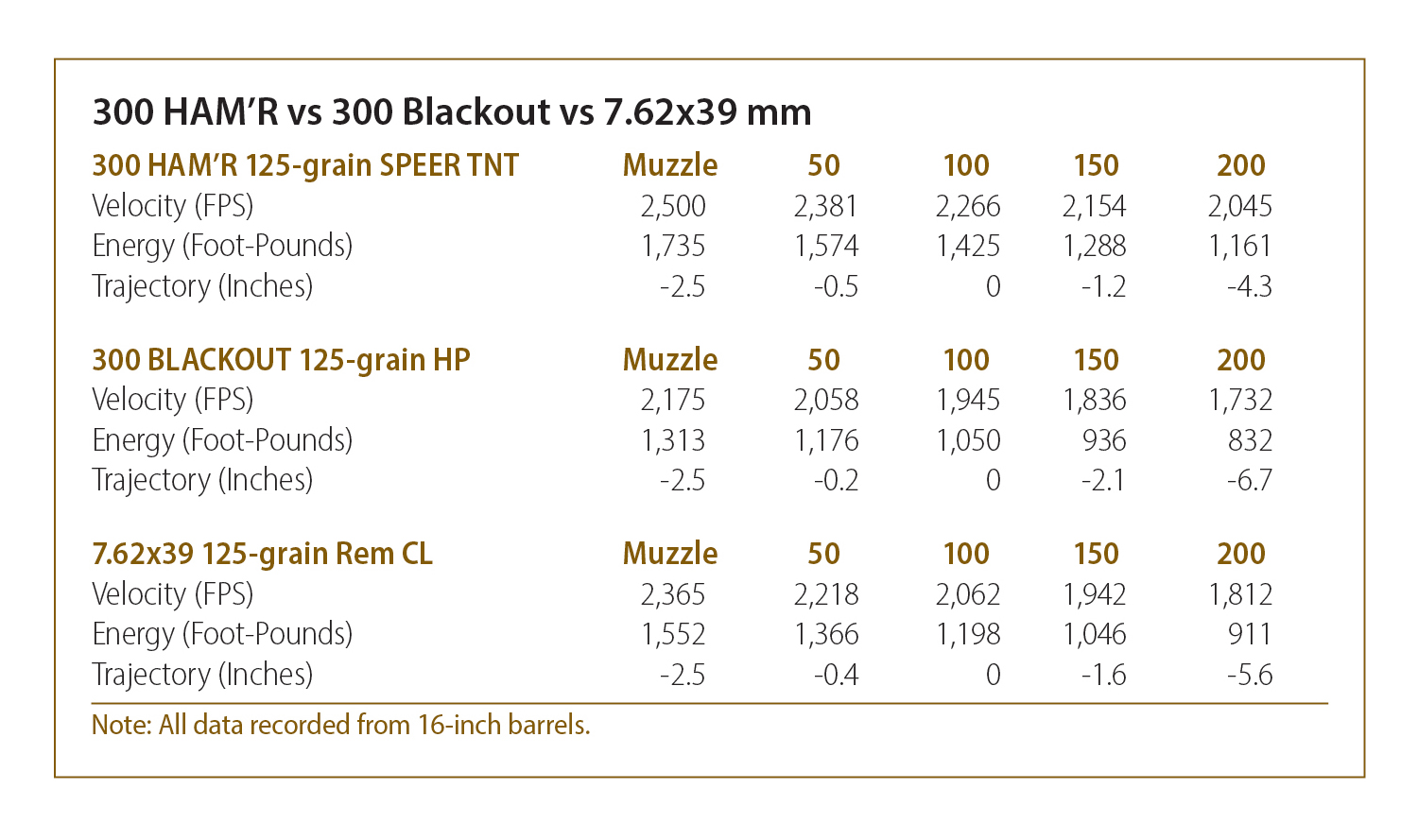
“Basically load the 130HC (Speer 130 grain Hot Core) to 2,500 (FPS) out of a 16.25-inch (barrel) and call it GTG (Good-To-Go).”
That was the text of an email I received from Bill Wilson about the new 300 HAM’R. What is notable about this email, other than our mutual shorthand, is that it is just one of hundreds we have exchanged concerning the new cartridge. Wilson Combat introduced this 300 HAM’R in mid-August 2018, but Bill and I have been exchanging comments and test results since the first of the year.
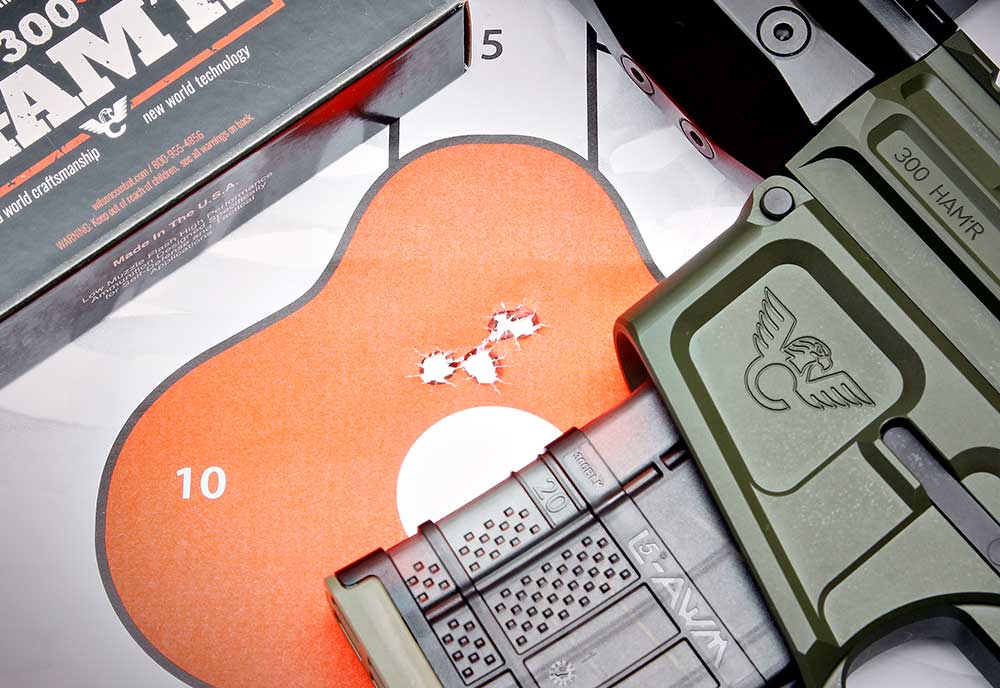
The 300 HAM’R has been a pet project for Bill, and from the beginning, he had a major goal for this cartridge. He wanted to design a round that, in his words “would give the optimal terminal performance out of a standard AR-15 platform.” Just in case you have not heard this phrase before, “optimal terminal performance” is the politically correct way of saying this cartridge will put down whatever threat you face and will do so with authority.
Just to make things harder, Bill wanted to maintain full magazine capacity equal to the 5.56 NATO and not make extensive changes to a standard AR-15 just to handle the 300 HAM’R.
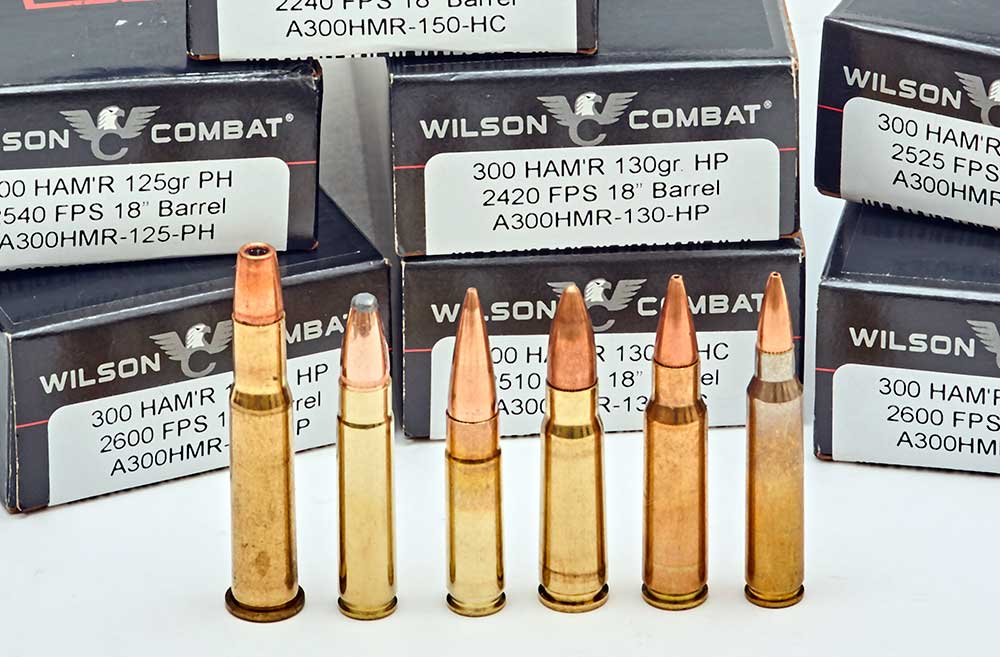
Wilson Combat did have a small head-start by using its own 7.62x40WT as a guidepost. The .223 Rem. is the parent case, and the neck has been expanded to .30-caliber to allow the use of the numerous projectiles available in the 110- to 150-grain weight range. The case was lengthened over the 7.62x40WT to a maximum length of 1.603 inches, and a 30-degree neck angle was chosen. Add in a slight decrease to the case taper, and the powder capacity is maximized.
Bullet selection was based on their respective profiles and terminal expansion that would match the velocity levels of the 300 HAM’R. Currently, 16 different bullets with weights varying from 110 to 150 grains that have been tested and deemed suitable for the 300 HAM’R.
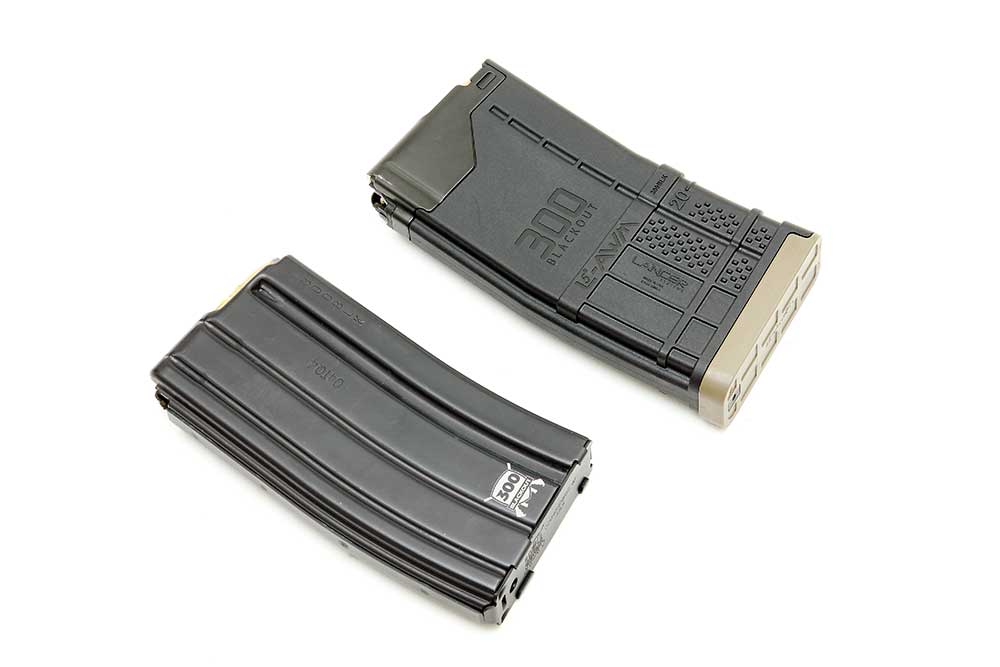
By basing the cartridge on the .223 Rem. parent case and keeping the overall cartridge length to 2.260 inches, the AR-15 standard bolt and bolt carrier group may be used without modification. Since the diameter of the bullets is greater than the 5.56, magazines designed for the .300 Blackout are recommended.
A 1:15-inch twist rate gave the best performance overall, and a simple barrel change is all that is needed to convert a standard 5.56-NATO AR-15 to the 300 HAM’R.
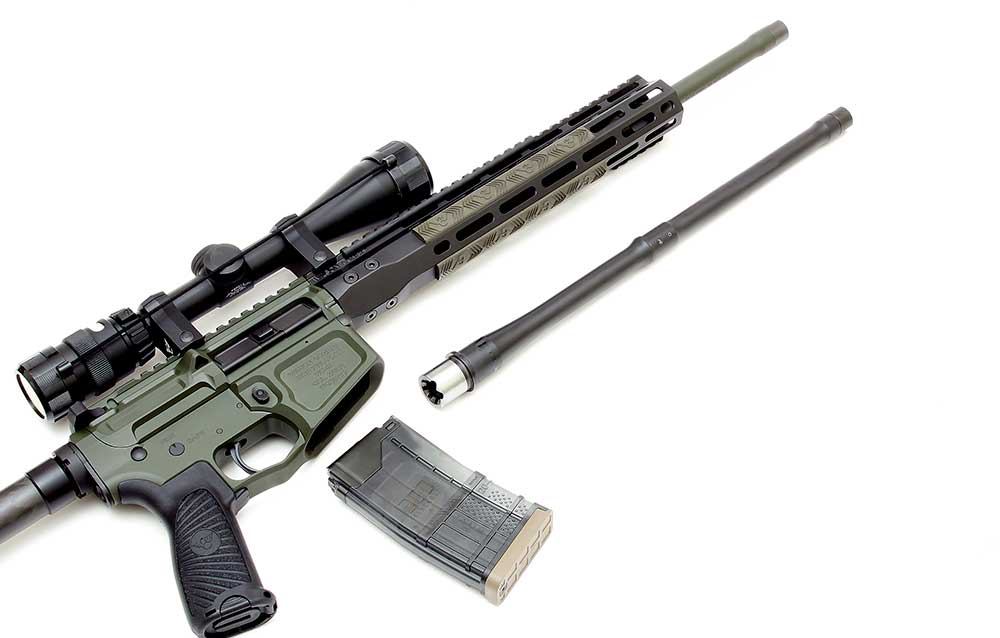
Bill Wilson and Wilson Combat have exceeded their goals with the new 300 HAM'R. Originally, Bill had hoped to rival the traditional .30-30 Win., but when compared to the current reloading manuals, the 300 HAM’R surpasses the .30-30 Win. in both velocity and energy.
At this point, you might be wondering, "Why add another cartridge for the AR-15 when there are so many out there now?" It all comes back to terminal performance, particularly when considering a cartridge for home defense. When your family’s safety is on the line; varmint cartridges are best left in the gun safe.
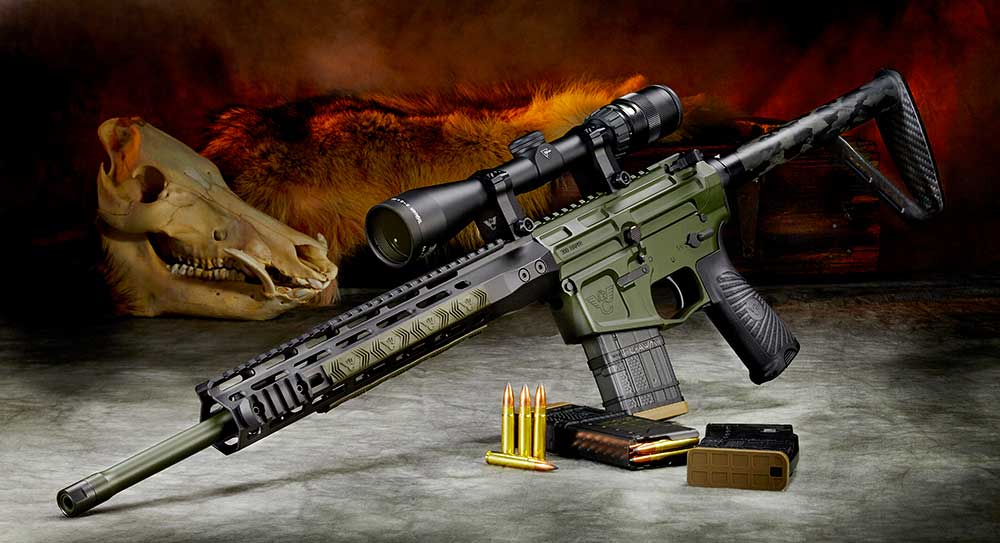
There are also rounds that may offer a better ballistic coefficient, but that only comes into play at extended distances. Hitting metal plates or paper targets out past 500 yards may be fun, but that doesn’t do a thing for you when your front door is being torn open. As soon as the 300 HAM’R was introduced, it became the leader for maximum energy when compared to any factory round loaded in a standard-capacity AR-15.
As with any new AR-15 round, the public will make comparisons to the current cartridges on the market, and the most direct comparison will be with the .300 Blackout. If a shooter wants a subsonic round for suppressed use and is willing to deal with its limitations, the .300 Blackout is the ticket. However, those wanting supersonic velocities to match the time-proven .30-30 Win. and outstanding accuracy, the 300 HAM’R is worth evaluating.
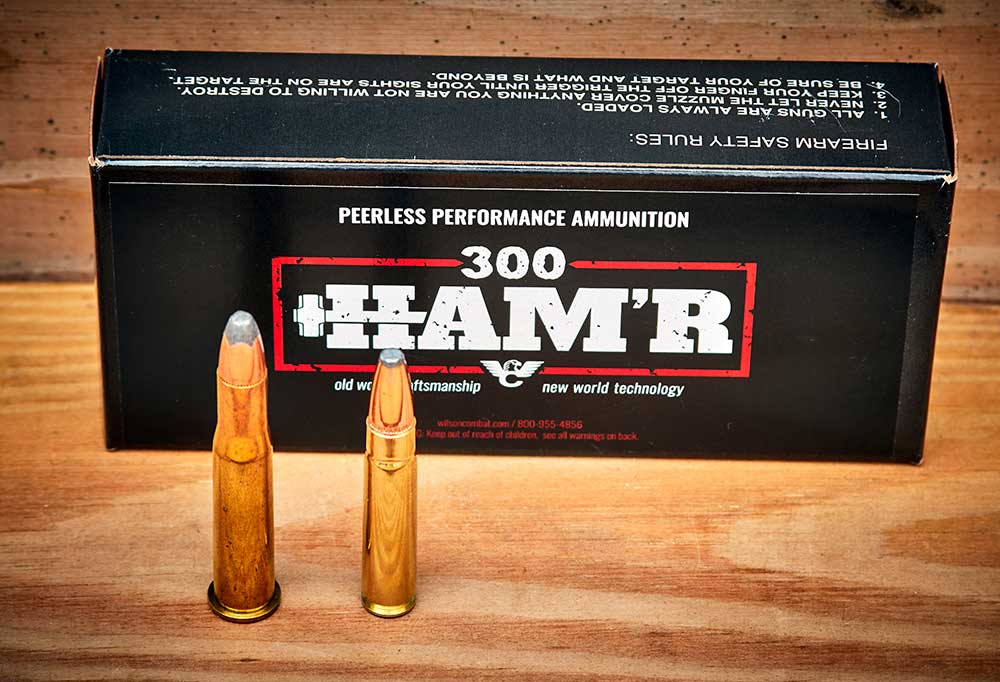
So far, this might sound like marketing hype, but I’m one for putting out the numbers and letting the public compare. Put the 300 HAM’R next to a 6.8 SPC or 7.62x39 mm factory load, and the 300 HAM'R has the advantage.
Unlike many new-ammo releases, rifles, ammunition and replacement barrels were available immediately upon the mid-August 2018 release of the 300 HAM'R. Wilson Combat has seven different loadings available and HSM Ammunition, as well as Black Hills, will be releasing their ammunition in the fall of 2018.
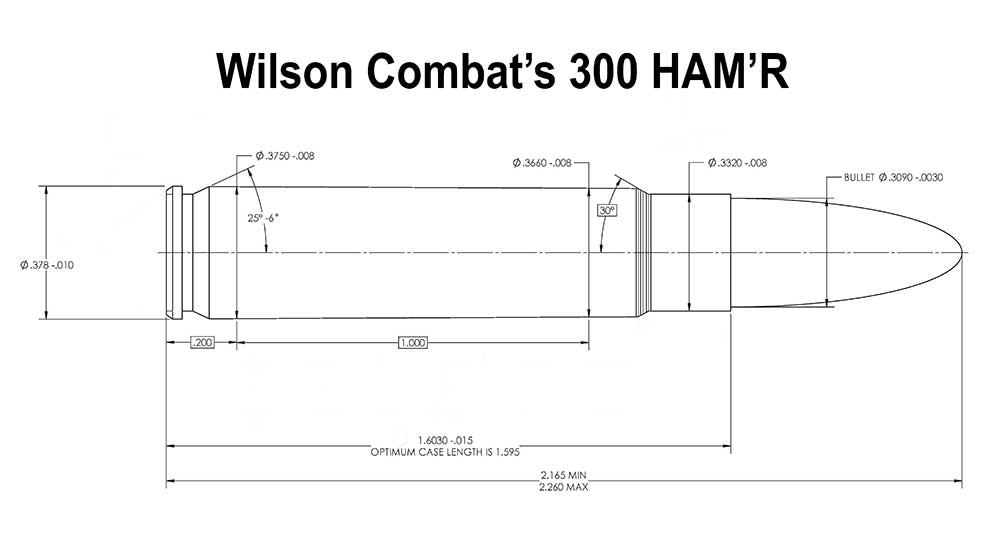
If you’re a handloader, dies from both Lee Precision and RCBS are available, as well as 300 HAM’R head-stamped brass from Starline. Loading data is posted on the Wilson Combat website with Accurate 1680, Shooters World Blackout and CFE-BLK by Hodgdon being the powders of choice.
For most of 2018, Bill Wilson slayed wild hogs up to 300 pounds with a 300-HAM’R AR, and his tally is more than a few hundred downed animals. Even I have been able to add another 10 to the count. Bill is an avid hog hunter, and short of gong into battle, I doubt you’ll find a better test medium for the “optimal terminal performance" of the 300 HAM'R than hog hunting.
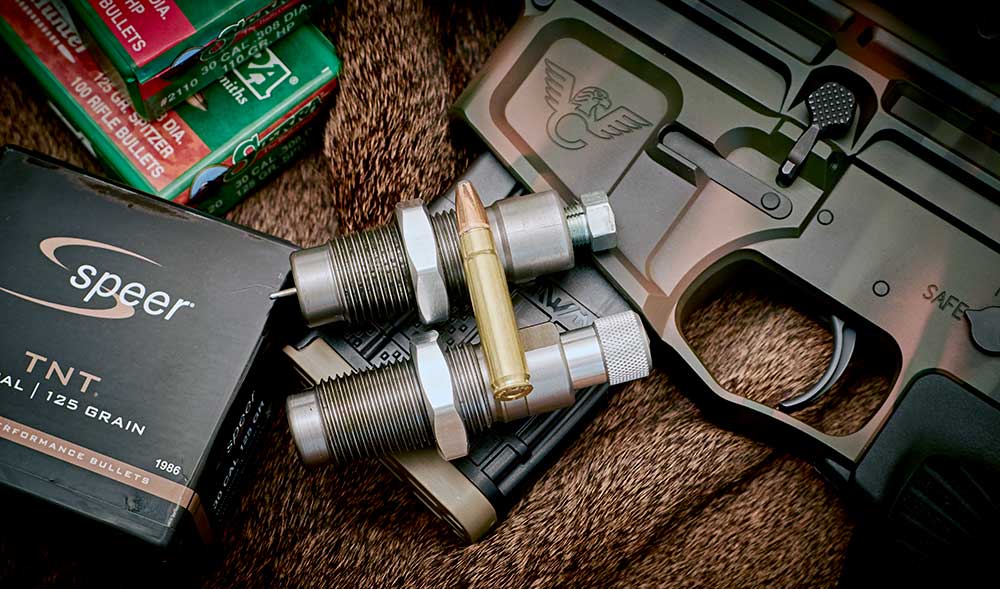
Of course, there is much subjectivity in trying to rate terminal performance, but I was shocked with the results. I’ve given this cartridge and the corresponding rifles enough testing that I am totally comfortable in making them my firearms of choice for home protection, with a little deer hunting on the side.
